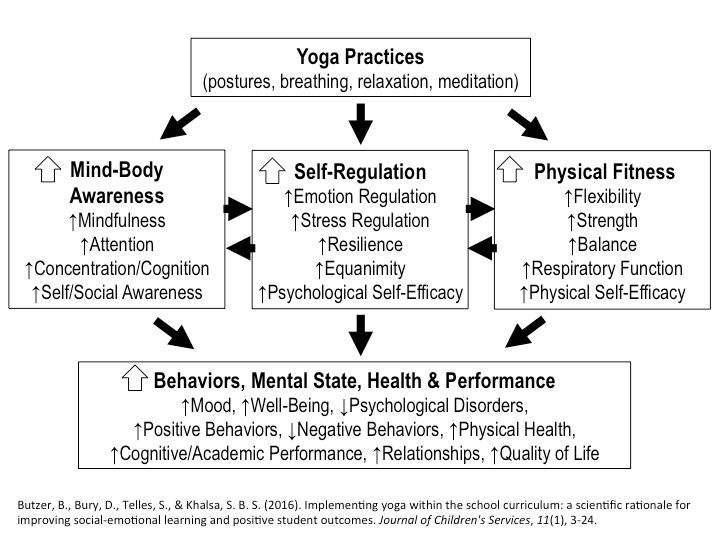
|
Join us for our LIVE REMOTE "Yoga & Mindfulness in the Classroom" Training on June 12th! . Sign Up Now!
|

As an education professional who is interested in school-based yoga, you might have already witnessed the benefits of yoga for your students. Still, a question remains. How and why is yoga beneficial for children and adolescents, and specifically, in the school setting? Scientific evidence for yoga in schools has grown exponentially over the past 5 – 10 years, and while the results are still preliminary, scientists are beginning to understand why yoga and mindfulness can serve as such a valuable component of school curricula nationwide.
Research suggests that school-based yoga cultivates competencies in mind-body awareness, self-regulation, and physical fitness. And classroom teachers benefit as well. Taken together, these competencies may lead to improvements in students’ behavior, mental state, health, and performance, as well as teacher resilience, effectiveness and overall classroom climate.

New scientific research is being published nearly every day and scientific evidence is what’s needed to change educational policy and make yoga and mindfulness a universal component of social, emotional and physical learning in our public school system. Yoga 4 Classrooms® is excited to be part of the growing evidence-based for school-based yoga and mindfulness. (You can read about our own research study here). Be sure to check out all of the supporting research, as well.
Portions of this blog were derived from a peer-reviewed article in the Journal of Children’s Services titled “Implementing Yoga within the School Curriculum: A Scientific Rationale for Improving Social-Emotional Learning & Positive Student Outcomes” by Bethany Butzer, Denise Bury, Shirley Telles, and Sat Bir S. Khalsa.
| Cookie | Duration | Description |
|---|---|---|
| cookielawinfo-checkbox-analytics | 11 months | This cookie is set by GDPR Cookie Consent plugin. The cookie is used to store the user consent for the cookies in the category "Analytics". |
| cookielawinfo-checkbox-functional | 11 months | The cookie is set by GDPR cookie consent to record the user consent for the cookies in the category "Functional". |
| cookielawinfo-checkbox-necessary | 11 months | This cookie is set by GDPR Cookie Consent plugin. The cookies is used to store the user consent for the cookies in the category "Necessary". |
| cookielawinfo-checkbox-others | 11 months | This cookie is set by GDPR Cookie Consent plugin. The cookie is used to store the user consent for the cookies in the category "Other. |
| cookielawinfo-checkbox-performance | 11 months | This cookie is set by GDPR Cookie Consent plugin. The cookie is used to store the user consent for the cookies in the category "Performance". |
| viewed_cookie_policy | 11 months | The cookie is set by the GDPR Cookie Consent plugin and is used to store whether or not user has consented to the use of cookies. It does not store any personal data. |